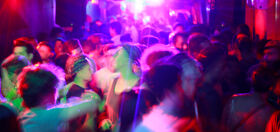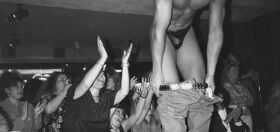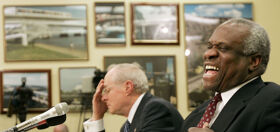 The Philippines has always had a sizable and unique LGBT population thanks to a less binary definition of gender (the effeminite bakla are often considered a third gender). But though more than 10% of Filipinos say they’ve had at least one homosexual encounter, and drag culture thrives in various regions, LGBT rights are still limited thanks in part to the influence of Western missionaries and rising Muslim fundamentalism.
The Philippines has always had a sizable and unique LGBT population thanks to a less binary definition of gender (the effeminite bakla are often considered a third gender). But though more than 10% of Filipinos say they’ve had at least one homosexual encounter, and drag culture thrives in various regions, LGBT rights are still limited thanks in part to the influence of Western missionaries and rising Muslim fundamentalism.
The Philippine Lesbian, Gay, Bisexual, and Transgendered Hate Watch has released a study calling out Mindanao as the deadliest place in the country for lesbians. Since 1996, half of all fatal hate crimes against queer women have occurred in the easternmost island, the nation’s second-largest city. That’s 6 out of 12 deaths, so we’re talking small numbers to begin with, but LGBT hate crimes, fatal or otherwise, are often under-reported.
For the GBT parts of the LGBT rainbow, the National Capital Region—which incorporates Manila, Quezon and Luzon, among other cities—is singled out as a death trap:
Of 61 hate crimes against gays recorded by the researchers, 28 were reported in NCR. Quezon City had the most, with 12, followed by nine in Manila.
There have also been more transgendered and bisexual Filipinos killed in NCR since 1996, many of them found with multiple stab wounds.
By June this year, 28 LGBT Filipinos were killed compared to 29 murdered in 2010. The LGBT Hate Crime Watch research records 103 hate crimes that resulted in death since 1996.
The grizzliness of these attacks is particularly disturbing:
How about we take this to the next level?
Our newsletter is like a refreshing cocktail (or mocktail) of LGBTQ+ entertainment and pop culture, served up with a side of eye-candy.
“The brutalities done to the murdered LGBT Filipinos are also suggestive that they were victims of hate crime. Thirty-six of the victims were stabbed multiple times. Twenty of them died of gunshots. Six were tortured before they were killed. Others were raped, or killed with a blunt object, or suffocated, or dismembered, or burned alive,” The group said.
Ilagan said Winton Lou Ynion, an openly gay professor at the University of the East, was stabbed 40 times by an unknown assailant in 2009.
She also cited the case of a trial judge in Laoag City who was “found lying in a pool of his own blood with his head almost decapitated and semen found in his anus.”
While the numbers, again, are still low, they are rising: From an average of 10 anti-gay murders between 1996 and 2008, the killings rose to 12 in 2009, 26 in 2010 and 27 just in the first six months of 2011. Gabriela Party Representatives Luzviminda Ilagan and Emmi De Jesus have petitioned for an investigation into anti-LGBT hate crimes and appropriate legislation to stem their growth.



















Kev C
As awareness and tolerance increases, so does the risk of backlashes at a target that has become more visible. I think we’re seeing the same around the world, in Brazil, Africa and everywhere where homosexuals were mostly hidden, or ignored and mildly tolerated, now become a matter of public discussion and action.
Religious fundamentalism and traditionalism are also spreading, as cowardly homophobes hide themselves amongst the good religious people and corrupt their traditions and culture. Attacking religion does not help, but alienates those who need to stand up against the haters who hide amongst them.
Greg
The Philippines is still a good place for LGBT. Many Korean LGBT leave Korea only to come out here in the Philippines. The level of freedom for LGBTs to express themselves is really staggering. The Philippines is a third world country and crimes are pretty high. For LGBT and the heterosexuals, crime rates are pretty high. But if you will consider most commercials and TV programs here, you can really see how Gay the country is.